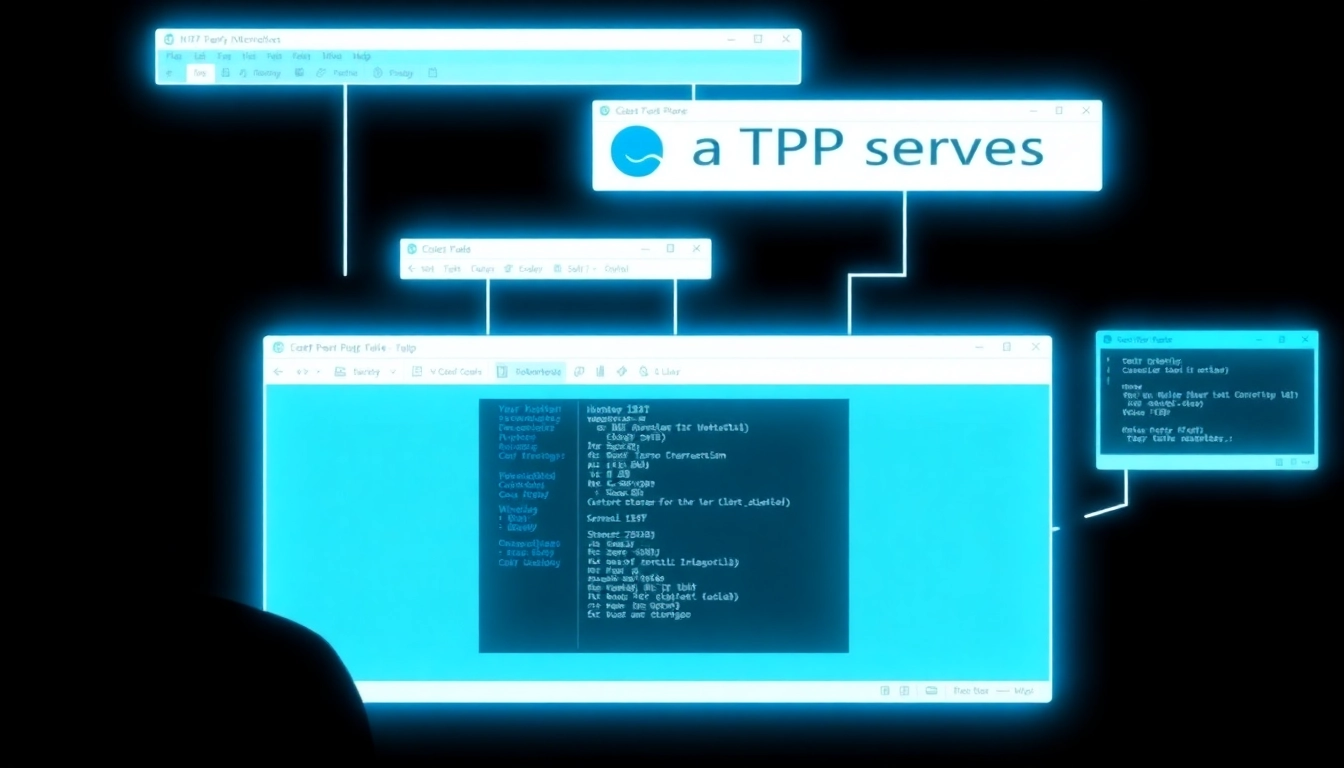Understanding 10 Minute Mail
What is 10 Minute Mail and How Does It Work?
10 Minute Mail is a temporary email service designed to provide users with disposable email addresses that exist for a limited period, typically ten minutes. This service is popular among internet users who wish to avoid giving their permanent email addresses when signing up for websites, newsletters, or online services. As a result, it helps mitigate spam and unnecessary junk in your primary inbox.
The mechanics of 10 Minute Mail are straightforward. When a user accesses the service, they are instantly assigned a randomly generated email address. This address can be used to receive emails, verification codes, and links. After ten minutes, the email address expires and becomes inaccessible, effectively eliminating any trace of the previously received messages. For users looking for a temporary solution for online communication, 10 minute mail provides a hassle-free option.
The Benefits of Using Temporary Email Services
There are numerous benefits to utilizing temporary email services like 10 Minute Mail. Below are the key advantages:
- Enhanced Privacy: By using a temporary email address, users can maintain their privacy and keep their primary email address secure from potential data breaches or spam.
- Instant Verification: Many online services require email verification. With a disposable email address, users can bypass the need to provide their personal emails, making it easier to sign up quickly.
- Spam Protection: Temporary emails are particularly useful when signing up for websites or promotions that might lead to unwanted spam. Once the email expires, the user does not have to worry about receiving further communications.
- No Sign-Up Required: Most temporary email services do not require users to create an account, significantly reducing the friction involved in acquiring a new email address.
- Test Registration Processes: Developers can use temporary email addresses to test registration processes on platforms they are developing or auditing.
Common Use Cases for 10 Minute Mail
10 Minute Mail is frequently employed in a variety of situations. Here are some common scenarios where users find it particularly beneficial:
- Signing Up for Trials: Users can take advantage of free trials for services or products without leaving their actual email address, thereby protecting their privacy.
- Accessing Content: Many websites require an email address to access premium content such as downloadable files or articles behind paywalls. A temporary email can be used in these instances.
- Receiving Code Verifications: Temp email addresses are ideal for receiving SMS verification codes or email link verifications, especially from less trusted sources.
- Online Marketplaces: When buying or selling products online, users can use 10 Minute Mail to communicate with potential buyers or sellers without exposing their permanent details.
- Event Registrations: Users can register for events, webinars, or online classes with temporary emails to avoid cluttering their regular inboxes with promotional material.
Setting Up Your 10 Minute Mail Account
Step-by-step Guide to Create a 10 Minute Mail
Creating a temporary email using 10 Minute Mail is quick and easy. Here’s a step-by-step process:
- Go to the Service: Visit the 10 Minute Mail website.
- Get Your Temporary Email: The site will automatically generate and display your new temporary email address.
- Copy the Address: Highlight and copy the email address for future use within the ten-minute window.
- Use the Email: Enter this email address when required on any online platform that prompts for an email.
- Receive Emails: Check the website to see incoming messages. You will receive them in real-time as they come in.
- Expiration: After ten minutes, the email address will be deactivated, thus ensuring that no spam reaches your real inbox.
Choosing the Right Temporary Email Provider
While 10 Minute Mail is a popular choice, the right temporary email provider depends on your specific needs. Consider the following criteria when selecting a service:
- Duration of Email Validity: Some services offer emails that last longer than ten minutes, which may be beneficial depending on your usage.
- User Friendliness: A clear and intuitive interface makes it easier to receive and manage temporary emails efficiently.
- Email Forwarding Features: If necessary, choose a service that allows email forwarding to another address.
- Security Features: Look for providers that implement security measures to protect your temporary emails from potential threats.
- Reputation and Reviews: Consider feedback from current users regarding the reliability and quality of the service.
Tips for Effective Usage of 10 Minute Mail
To maximize the benefits of 10 Minute Mail, here are some practical tips:
- Be Timely: Remember that the email is temporary. Use it promptly to verify accounts or receive codes to avoid expiry.
- Utilize For Single Transactions: Focus on using the temporary email for single transactions or sign-ups to avoid confusion.
- Monitor Incoming Emails: Regularly refresh the inbox during your ten-minute window to catch any verification messages or important communications.
- Don’t Use for Sensitive Transactions: Avoid using temporary emails for sensitive transactions such as banking or personal correspondence.
- Be Mindful of Expiry: Ensure you keep track of the time to prevent missing out on essential communications before the account expires.
Privacy and Security Implications
How 10 Minute Mail Protects Your Data
10 Minute Mail inherently protects user data through the anonymity of its temporary email service. Since the email addresses are randomly generated and only active for a short period, any correspondence sent to that address does not get linked back to personal information. This feature is particularly valuable when signing up for services that might compromise personal data.
Moreover, since users don’t need to provide any identifiable information to obtain their temporary email address, the risk of data breaches is significantly diminished. Users can sign up for newsletters, accounts, or trials without the worry of their real email getting into the hands of marketing firms or hackers.
The Risks of Using Disposable Emails
While disposable email services offer clear advantages, there are inherent risks that users should be aware of:
- Potential Blocking: Some legitimate services may block or restrict access to users with disposable email addresses, making it difficult to create accounts.
- Expired Emails: There’s always a risk of missing important communications if you use a temporary email that expires quickly.
- Limited Functionality: Temporary emails do not always support attachments or other capabilities that permanent email services offer.
- Privacy Concerns with the Provider: Users must trust that the service provider does not log or misuse any data associated with the temporary emails.
- Phishing Risks: While using disposable emails can protect your primary inbox, users must still be vigilant and avoid falling victim to phishing scams targeting temp email addresses.
Best Practices for Secure Online Activity
To enhance both security and privacy while using temporary email services, adhere to the following best practices:
- Use HTTPS: Ensure that the site you are visiting is secure (check for HTTPS in the URL) to protect any transactions or communications.
- Avoid Personal Use: Do not use temporary emails for any sensitive information or important communications.
- Clear Browser Cache: After using temporary emails, clear your browser cache and cookies to further diminish tracking possibilities.
- Regularly Change Emails: It is advisable to regularly change your temporary email provider for added security, especially if you notice a surge in spam.
- Educate Yourself on Phishing: Stay informed about phishing tactics and potentially misleading emails. Identifying common signs of scams can significantly boost your online safety.
Comparing 10 Minute Mail Providers
Features to Look for in a 10 Minute Mail Service
Choosing the best 10 Minute Mail provider can heavily impact your overall experience. Here are essential features to consider:
- User Interface: A clean, logical UI makes it simpler to send and receive emails quickly.
- Support for Different Domains: Some services offer email addresses with various domains; this can be useful for added uniqueness.
- Data Retention Policies: Understanding how long the service retains any data is crucial for users concerned about privacy.
- Access to Previous Emails: Some services may allow access to emails after expiration if the user needs to refer back to data.
- API Integration: Consider if the service offers API integration for developers needing temporary emails for development purposes.
Popular Alternatives to 10 Minute Mail
While 10 Minute Mail is a well-regarded service, other alternatives on the market provide similar functionality. Some noteworthy options include:
- Guerrilla Mail
- Mailinator
- Tempmail.com
- Fake Mail Generator
- YOPmail
Each of these services comes with distinctive features, so it is wise to compare them based on your specific requirements.
User Experiences and Reviews
Feedback from users can provide insight into the effectiveness of various temporary email services. Many users appreciate the convenience and anonymity provided by services like 10 Minute Mail, citing the speed of setup and ease of receiving emails as significant advantages. However, some users have encountered issues such as blocked email addresses when trying to register on certain platforms, resulting in mixed reviews.
Engaging with the community through forums or review sites can reveal trends in user experiences and highlight potential issues to be aware of.
Troubleshooting Common Issues
What to Do If Your 10 Minute Mail Isn’t Working
If you encounter issues with your temporary email service, the following troubleshooting steps can help:
- Refresh the Page: Sometimes the page may not update correctly. Refreshing can resolve display issues.
- Clear Cache: If the website does not respond or loads incorrectly, consider clearing your browser cache.
- Check Spam Filters: Ensure the emails you are expecting haven’t accidentally been filtered into spam or junk folders.
- Use a Reliable Browser: Occasionally, browser compatibility issues arise, so using the latest version of a widely-supported browser is advisable.
- Contact Support: If issues persist, consider reaching out to the service provider’s support, if available, for further assistance.
Frequently Asked Questions about 10 Minute Mail
Here are some common questions users ask about 10 Minute Mail:
- Can I use 10 Minute Mail for receiving important documents? It is advised not to use it for critical documents as the email address expires quickly.
- Does 10 Minute Mail offer multiple addresses at once? Most services allow you to generate multiple temporary email addresses but be mindful of time limits.
- Are there any fees involved? Most 10 Minute Mail services are entirely free to use, although some might offer premium features at a cost.
- How secure is 10 Minute Mail? Though it offers anonymity, it is wise to avoid using it for sensitive transactions and remain aware of potential risks.
- Can I access emails after the timeout period? Normally, once the time limit is up, the emails cannot be retrieved, so make sure to be prompt in checking them.
Resources for Further Assistance
If you need additional help or information regarding the use of 10 Minute Mail and its features, there are various resources available including:
- Online forums dedicated to internet privacy and temporary email services.
- Blog posts and articles that discuss best practices for email security.
- Tutorial videos that provide in-depth guidance on utilizing temporary email services effectively.
- Customer support pages of specific 10 Minute Mail providers.


